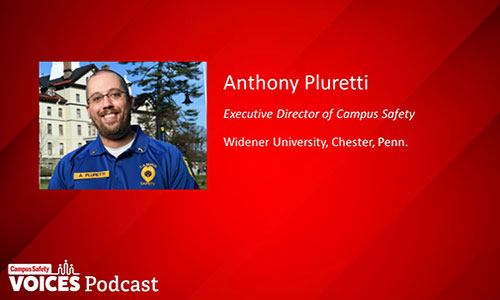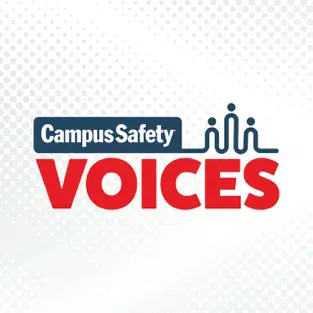A customer is defined as a person or organization that buys goods or services. When people hear the term “customer,” they might picture someone purchasing an item such as food, clothing, toys — or even a car or home.
For Anthony Pluretti, executive director of campus safety at Widener University, his department’s “customers” are the students, and the “goods” they are “selling” are the institution and the department itself. The department has three guiding principles — all of which are customer-focused:
- Foundations of a customer-centric team (5:54)
- Delivering customer service (12:11)
- Ongoing improvements (22:08)
Putting the customer first and at the center of every decision — often referred to as customer centricity — is always top-of-mind for Pluretti, who is a 2022 Campus Safety Director of the Year finalist.
“Customer centricity is immersing ourselves in the situations, perspectives, and expectations of our customers. It’s important for all of us, especially in higher education, that we’re all salespeople and we are constantly selling our customers on our institution,” Pluretti told Campus Safety. “When we look at every aspect of the customer experience, and how that plays into their larger perspective of how they feel about the institution, it’s important to know that these feelings drive their decisions. Each small observation, interaction, and experience culminates into the larger opinion of that feeling. Each member of an institution is part of the recruitment and retention team, and that includes law enforcement.”
[promo_content slug=”2022-campus-safety-director-of-the-year-winner-announcement-at-csc”]
Customer centricity, Pluretti continued, is particularly difficult for law enforcement because they have to enforce laws, policies, and procedures, which in turn leads to some hesitancy and opens up difficult conversations within the community.
Pluretti started in his role in Feb. 2020 — just one month before much of the country shut down due to the pandemic. During that time, he conducted an assessment of the “customer experience” of students when they interact with campus police.
“First thing you have to do is call dispatch and find out how do they answer the phone — do they sound happy to talk to you? Do they sound like they’re going to solve your problem, or that they’re engaged and they care?” he urged. “Look at how the officer responds to that call — what’s the type of interaction? Look at how they appear. What’s their patrol and visibility? Paperwork, forms — anything that a customer comes into contact with is part of customer centricity.”
Employees Are Customers Too
As head of the department, Pluretti’s direct “customers” are his employees, and he has launched many initiatives to keep his employees satisfied — one being the relaxation of grooming standards. Officers are allowed to grow facial hair, show appropriate tattoos, and wear their hair in a style that they prefer.
“It’s important for our customers that they don’t just see a uniform, but they see the person who is wearing it. We want them to establish an immediate connection with them over some aspect of that personal appearance,” Pluretti said. “A lot of individuals will look at that and say, ‘Well, where is the professionalism?’ My answer to that is, quite frankly, ‘Professional for who?’ We’re being professional for the students. I can’t tell you the amount of times I’ve personally observed a student walk over and say, ‘Oh my God, I love your ink on your forearm.’ And then they start talking about that tattoo but that’s a personal connection that we just established.”
Pluretti has spearheaded other initiatives to keep his employees satisfied, including implementing a motivational leadership model that encourages employees to assess their own personal goals and career trajectories (9:06).
In regard to the department’s goal of ongoing improvements, higher education campuses get new customers every single year with incoming freshmen, which poses the need for continued reevaluation of the services being provided.
“[The new customers] come with new expectations and opportunities and engagements, so you can’t really become stagnant in your approach to engagement,” Pluretti said. “You have to develop constant information-gathering practices to understand what the new customer really focuses on so that you can provide it. You have to remain agile. Nothing is cookie-cutter — everything is a custom experience for that individual, so you have to constantly be meeting with student leaders and student groups, and monitoring social media. You need constant engagement.”
However, the solution to this problem is simple, Pluretti says: Ask the customer what they want — and then provide that…and more.
To hear more about how Pluretti has worked to ensure both students and employees are “happy customers,” listen to our full interview.









